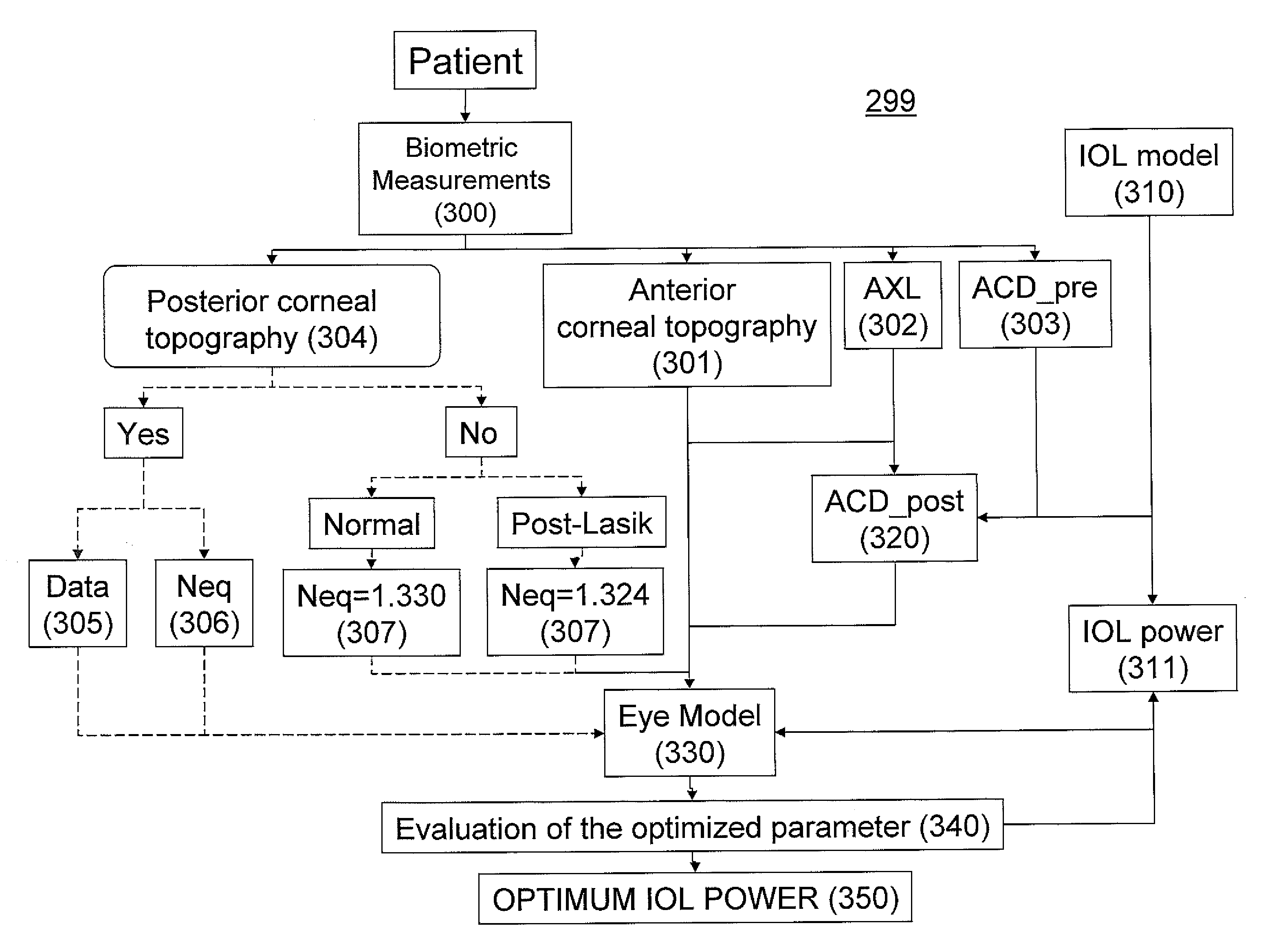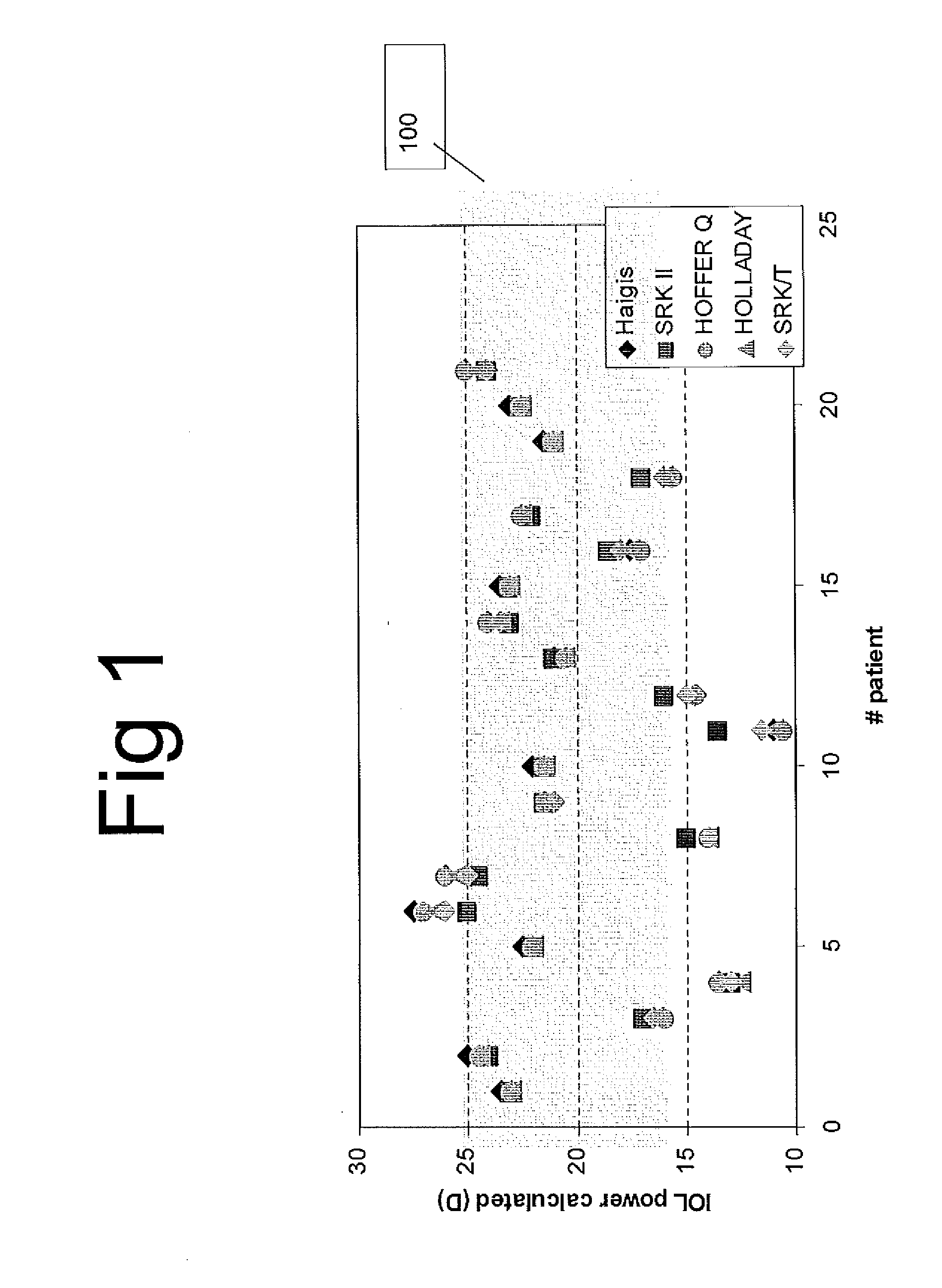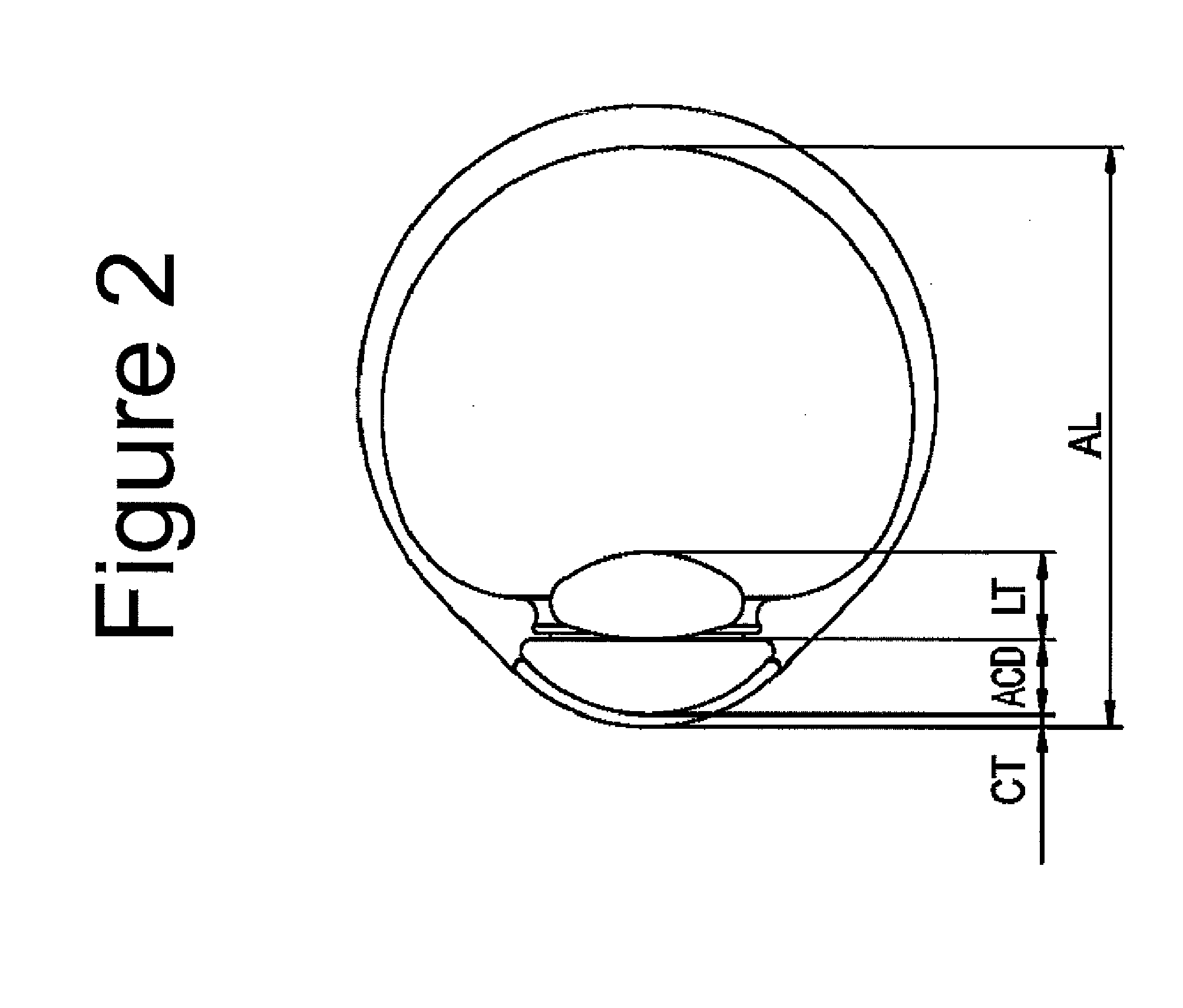Customized intraocular lens power calculation system and method
a technology of intraocular lens and power calculation, applied in the field of intraocular lens power calculation, can solve the problems of overestimating the iol power necessary for long eyes, formulas that do not provide accurate predictions for all preoperative refractive states, and typically underestimate the necessary iol power. to achieve the effect of improving the accuracy of predicting optimal iol power
- Summary
- Abstract
- Description
- Claims
- Application Information
AI Technical Summary
Benefits of technology
Problems solved by technology
Method used
Image
Examples
Embodiment Construction
[0031]It is to be understood that the herein disclosed systems and methods may have been simplified to illustrate elements that are relevant for a clear understanding of the present invention as defined by the appended claims, while eliminating, for the purpose of clarity, many other elements and / or steps found in typical intraocular lens systems and methods. Those of ordinary skill in the art may thus recognize that additional elements and / or steps may be desirable and / or required to implement the herein described systems and methods. However, because such elements and steps are well known in the art, and because they do not facilitate a better understanding of the present invention, a discussion of such elements and steps is not provided herein. The present disclosure is intended to include all such elements and steps known to those of ordinary skill in the art.
[0032]The herein disclosed systems and methods provide a unique and customizable procedure for calculating a recommended ...
PUM
 Login to View More
Login to View More Abstract
Description
Claims
Application Information
 Login to View More
Login to View More - R&D
- Intellectual Property
- Life Sciences
- Materials
- Tech Scout
- Unparalleled Data Quality
- Higher Quality Content
- 60% Fewer Hallucinations
Browse by: Latest US Patents, China's latest patents, Technical Efficacy Thesaurus, Application Domain, Technology Topic, Popular Technical Reports.
© 2025 PatSnap. All rights reserved.Legal|Privacy policy|Modern Slavery Act Transparency Statement|Sitemap|About US| Contact US: help@patsnap.com



